Sarcoptes species — sarcoptic mange or scabies
Adult mites of the genus Sarcoptes live in the stratum corneum of the skin of dogs.
Summary
Adult mites of the Sarcoptes scabiei var canis live in the stratum corneum of the skin of dogs and wild canids. The entire life cycle occurs on the host. Clinically, sarcoptic mange (canine scabies) is characterised initially by intense pruritus and erythema and papulocrustous eruptions, and later by a range of pathological changes in the skin including particularly epidermal hyperplasia. Areas of skin with little hair are the most commonly affected. Mites are best recovered by deep skin scraping (sometimes biopsy), but because they can be difficult to find, dogs with clinical signs compatible with sarcoptic mange should be treated on suspicion.Sarcoptes mites are transmitted most often by direct contact between hosts, although fomites can be involved and adult mites can survive a few weeks off the host. The infestation is highly contagious, and all in contact dogs should be treated. While canine Sarcoptes mites may transiently infest other animals and people in the household, these issues tend to resolve rapidly on treatment of the dog(s) and cleaning of contaminated fomites. Several products with new generation macrocyclic lactones are labeled for canine sarcoptic mange in Canada, and the isoxazolines appear to be highly effective and are labeled for Sarcoptes outside Canada. People have their own Sarcoptes.
Taxonomy
Phylum: Arthropoda
Subphylum: Amandibulata
Class: Arachnida
Subclass: Acari
Order: Astigmata
Family: Sarcoptidae
Sarcoptes scabiei, the cause of scabies or sarcoptic mange, are in the same order as several other mites of importance in animal health, including Notoedres, Otodectes, Chorioptes and Psoroptes, which is different from that containing Cheyletiella, Demodex and Neotrombicula (Prostigmata), and from that containing Dermanyssus and Ornithonyssus (Mesostigmata). Strains of Sarcoptes appear to be host-specific.
Note: Our understanding of the taxonomy of parasites is constantly evolving. The taxonomy described in wcvmlearnaboutparasites is based on Deplazes et al. eds. Parasitology in Veterinary Medicine, Wageningen Academic Publishers, 2016.
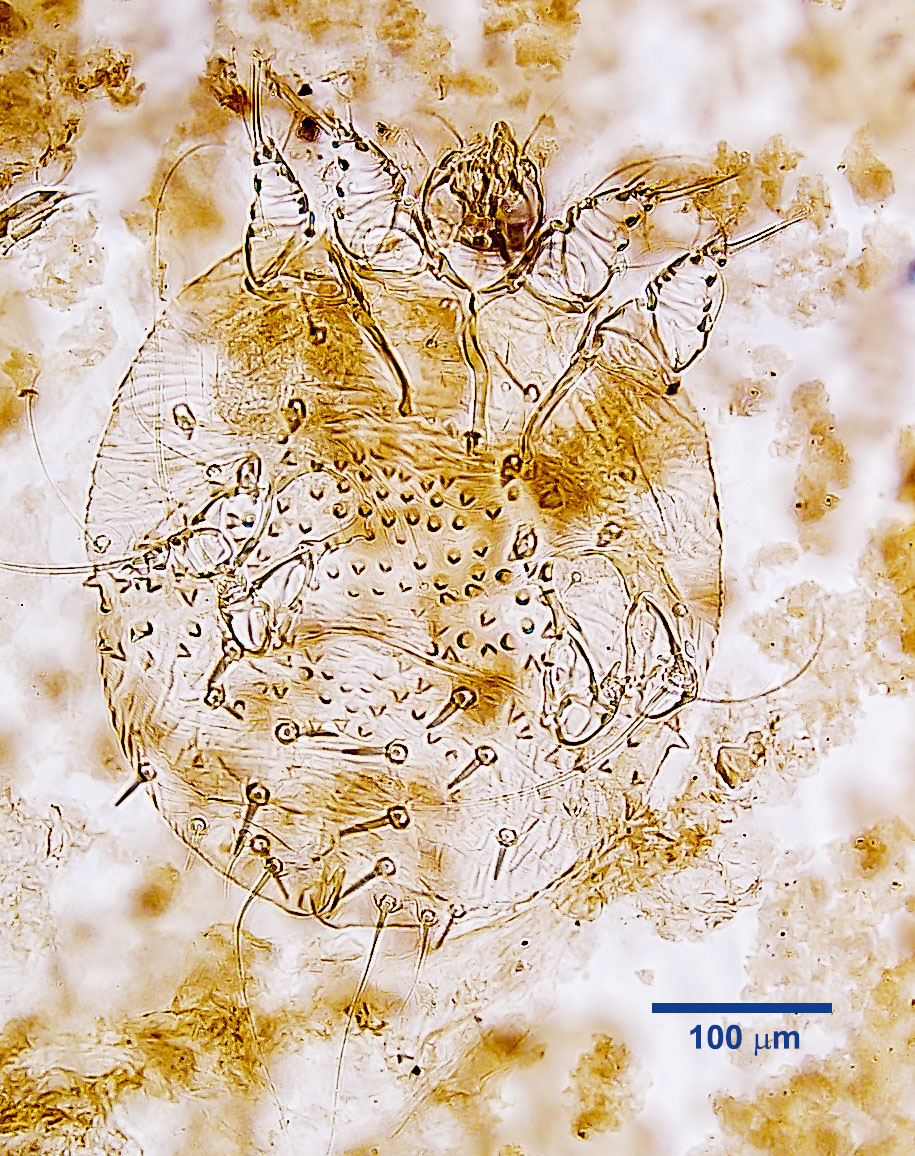
Morphology
Host range and geographic distribution
Life cycle - direct
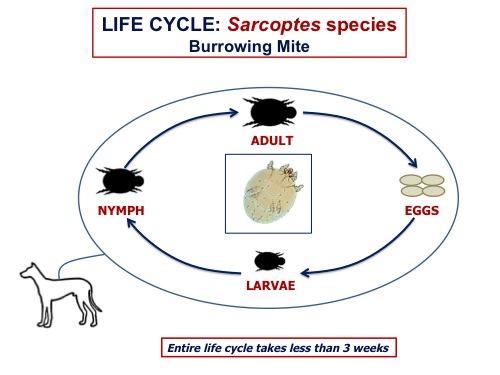
The life cycle of Sarcoptes occurs totally on the host. Adult mites mate in small depressions in the epidermis. Females dig tunnels in the outer epidermal layers where they lay eggs. These hatch to release larvae, which develop first to nymphs and then to adults while moving to the skin surface.
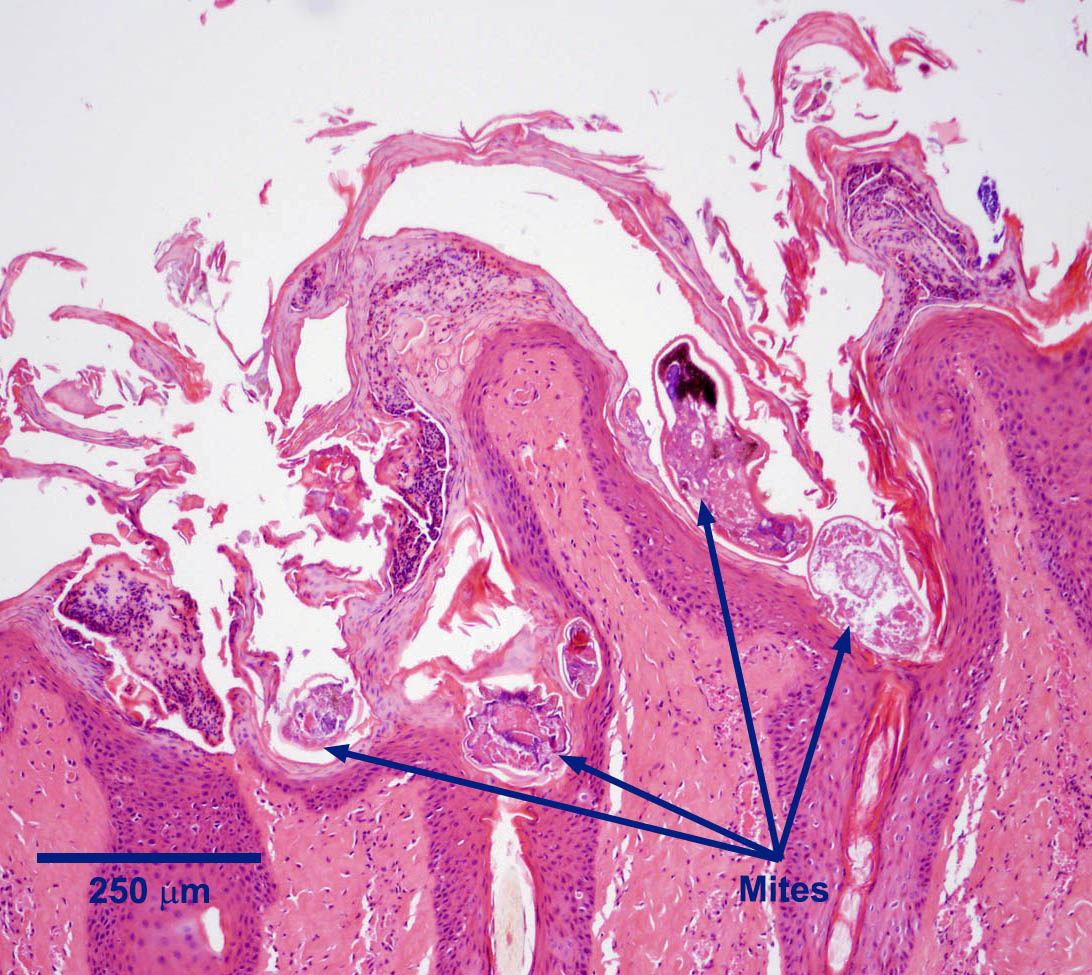
The life cycle can be completed in less than three weeks. Mites may survive off the host for a few weeks, and the survival time is dependent on temperature and humidity (cool and humid prolong life).
Epidemiology
Sarcoptes mites are transmitted by direct contact among dogs, and sometimes via fomites, for example bedding and grooming equipment. The infestation is highly contagious, and readily spreads within groups of dogs. Clinical signs appear to be worse in young animals, especially if malnourished.
Pathology and clinical signs
Lesions of sarcoptic mange in dogs are most common where there is relatively little hair, and typically occur on the ears and elbows, as well as the ventral abdomen and chest and the legs. In some animals, the whole body comes to be affected.
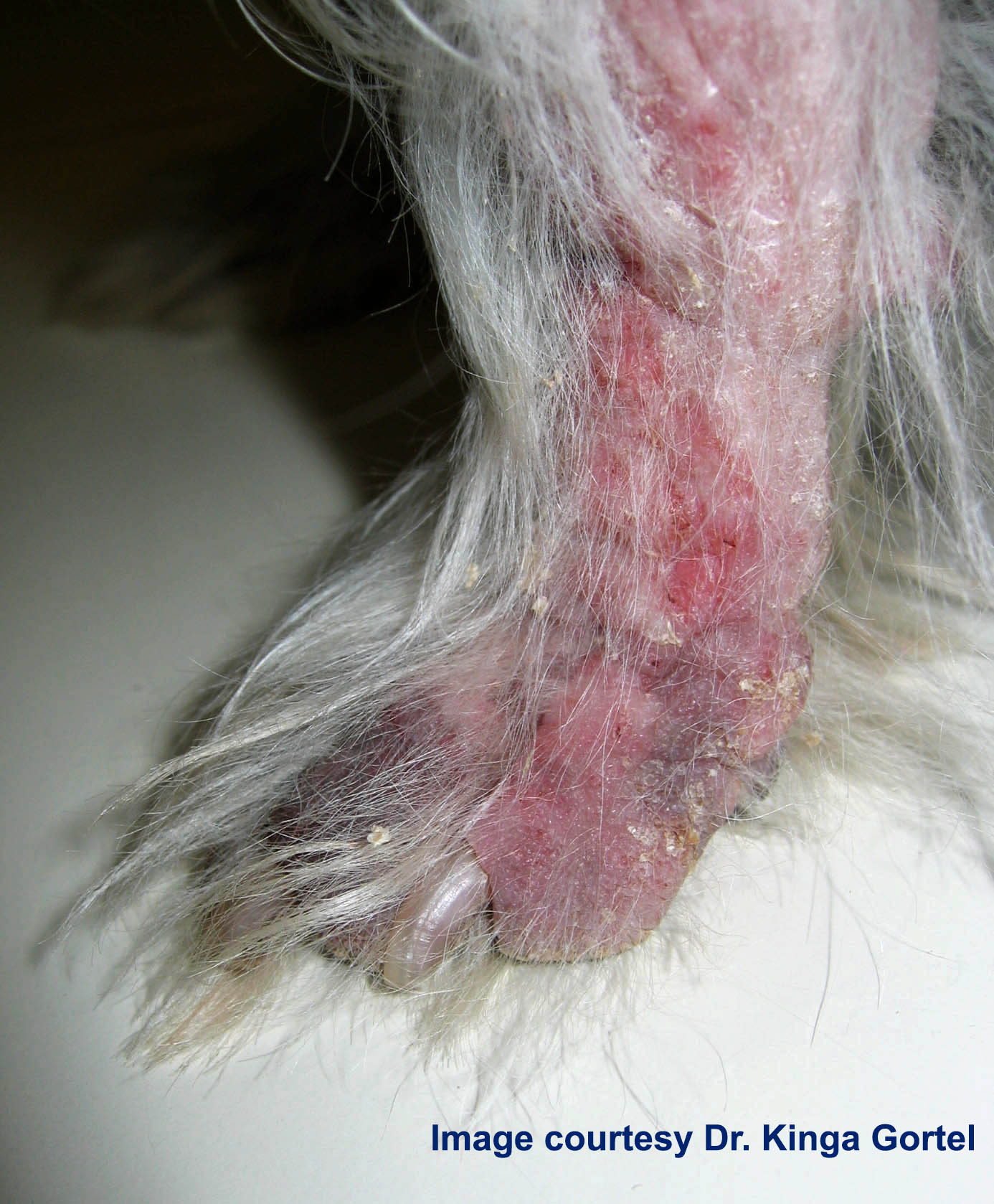
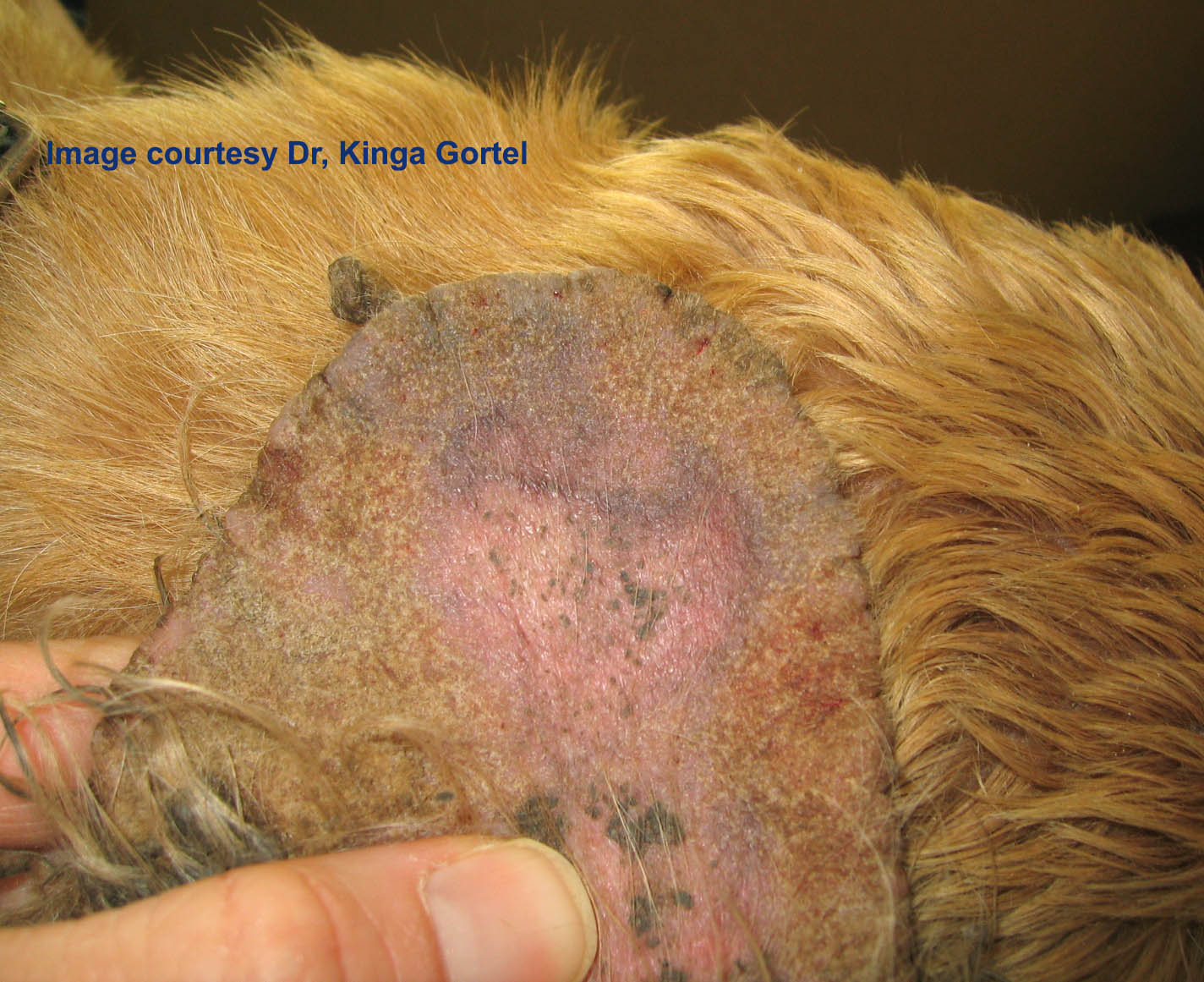
The early lesions of sarcoptic mange are reddish, papulocrustous eruptions with thick, yellowish crusts, usually with alopecia. There is intense itching (pruritus), which is largely immune-mediated. The itching causes the dog to seek relief, and this may result in hair loss from rubbing and sometimes severe excoriation. As the skin changes progress there is often epidermal hyperplasia.
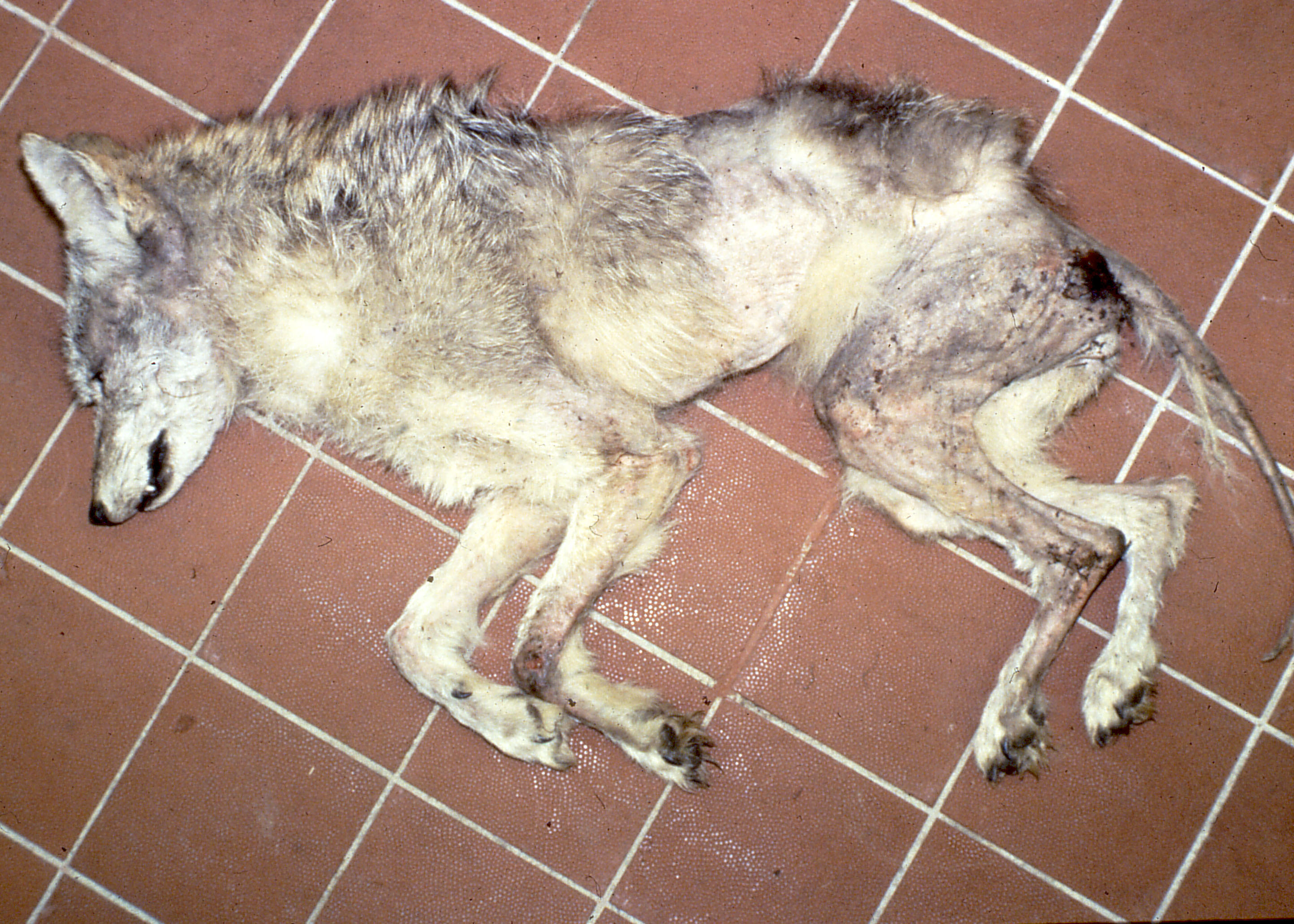
Some dogs show severe pruritus but have minimal skin lesions. It is very difficult or impossible to recover mites from skin scrapings from these animals. These cases respond very rapidly, however, to treatment with an acaricide, suggesting that mites are present and causing pruritus, but are too few to be detected.
Diagnosis
Histology of skin biopsies is sometimes used to diagnose sarcoptic mange, but sensitivity and specificity are both sub-optimal.
Treatment and control
There are two products approved in Canada for the treatment of sarcoptic mange in dogs: moxidectin with imidacloprid (ADVANTAGE MULTI) and selamectin (REVOLUTION). Several others are used extralabel, including most isoxazolines, which are often effective with a single dose. Several have label claims for mites in other countries.
Because Sarcoptes is highly contagious, it is very important to treat all in-contact dogs at the same time, including those with no clinical signs. It is also very helpful to hot-water wash bedding used by affected dogs, as well as grooming equipment and toys.
Public health significance
Sarcoptes mites from animals can infest people (especially from dogs, and much less commonly pigs), although such infestations are usually short-lived, resolving spontaneously in a couple of weeks following loss of access to the infested dog. People have their own Sarcoptes strain (Sarcoptes scabiei var hominis), which causes scabies and is highly contagious among people. The most obvious clinical sign of human scabies in people is intense pruritus, which is often worse when the skin is warm, for example when in a warm bed or after a warm shower.
Sarcoptes species in cats
Sarcoptic mange has been reported very rarely in cats. Clinical signs include pruritic papules on the face, ears and feet. Notoedric mange is a more likely differential diagnoses.
References
Csilla Becskei, Filip De Bock, Joanna Illambas, Judith A. Cherni, Josephus J. Fourie, Melanie Lane, Sean P. Mahabir, Robert H. Six. 2016. Efficacy and safety of a novel oral isoxazoline, sarolaner (Simparica™), for the treatment of sarcoptic mange in dogs. Veterinary Parasitology 222: 56-61. https://doi.org/10.1016/j.vetpar.2016.02.017
Chiummo, R., Petersen, I., Plehn, C. et al. 2020. Efficacy of orally and topically administered fluralaner (Bravecto®) for treatment of client-owned dogs with sarcoptic mange under field conditions. Parasites and Vectors 13: 524. https://doi.org/10.1186/s13071-020-04395-6

